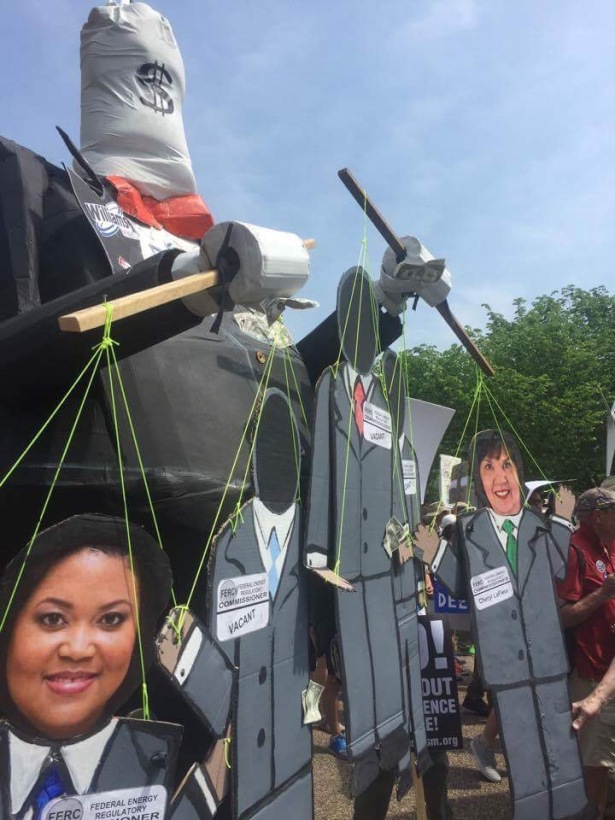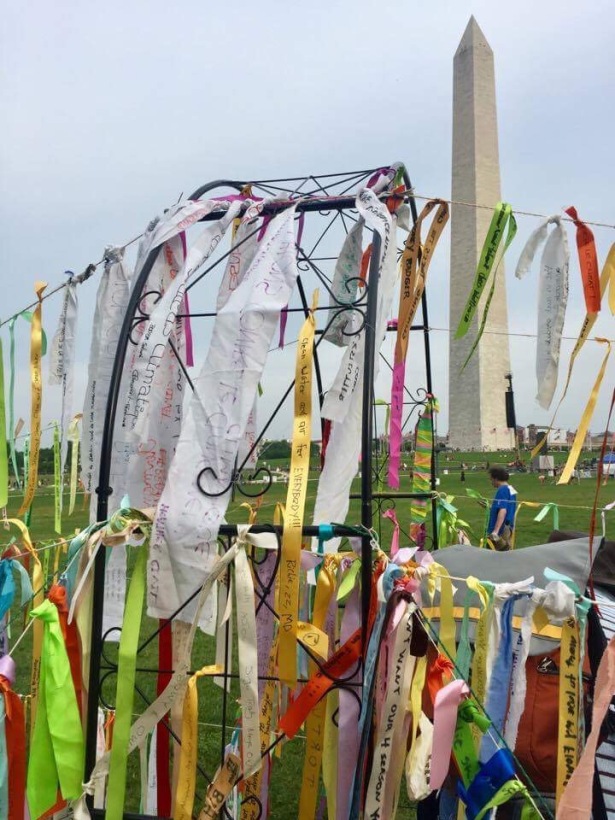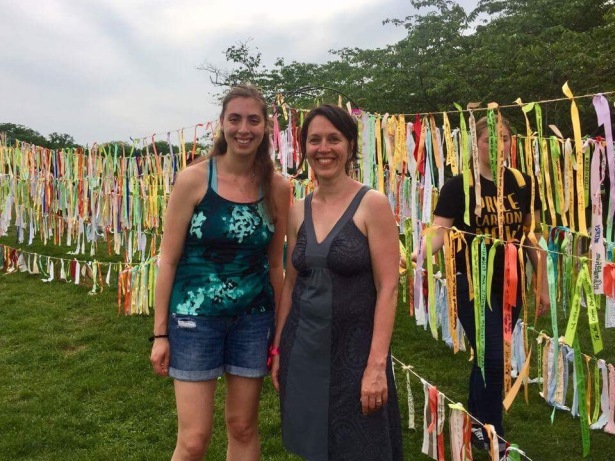This post comes from the Artists and Climate Change Blog
We really didn’t know what to expect. The last time I was in Washington, DC was for the Women’s March, and that exceeded any and all expectations. My grandparents, who live outside of DC, were not optimistic; no one was talking about record-breaking crowds for The People’s Climate March. A handful of my friends planned to march in New York City, and I knew of some others who had ventured down to DC for the day, but it was impossible to know how many people would emerge. One thing was for sure: it was going to be hot.
On the Metro into The District on April 29, we commented on those amongst us who were also heading in for the March. One element from the Women’s March we missed was the unifying pink hats. But we were welcomed by a woman from Seattle passing out homemade stickers touting phrases like “Science Matters†and “Demand Better Government.†When we got downtown, it was clear who was there for the March: just about everyone! Due to construction (intentionally planned for the day of this major march?), we rode a bus towards the National Mall. One of the first groups we crossed on our way to the March lineup was a group of young children and their parents, all dressed as little bees, and escorted by a Queen Bee. It was heart-melting (and while the little “bees†were already melting from the heat, the gesture was not lost). In the shade, we found the lineup, amongst the Defenders of Truth constituents, including scientists and educators. The signs were various, colorful, and witty. The March organizers focused on Climate, Jobs, and Justice, and it was clear from the start that this March was about those things, and everything in between. We set off through the streets of the U.S. capitol, in solidarity with the scientists around us, and the thousands of other concerned people of all backgrounds that poured into the streets with us.

En route to the White House, we crossed Trump International Hotel. Marchers erupted in sets of “Boo†and “Shame,†but also in celebratory music. I can’t capture this energy in writing (you can listen to this moment from the March , via Google Drive), but the big-band musicians elevated our marching, supporting our walk through the heat and accompanying our political action with some groovy tunes. At once, a march about climate justice buoyed other justice issues, like political justice. As our country’s power dynamics impact everyone who lives here (and around the globe), so do the decisions of those with that power.

In addition to the giant puppets, beautiful signs, and joyous music, there was organized creative action for individuals to participate in at the culmination of the March. Unlike at the Women’s March, people were invited to leave their signs on the lawn at the base of the Washington Monument, to be organized in a huge pattern, spelling out “Climate, Jobs, and Justice.†It was a simple yet impactful way to showcase the signs, in all their variety. We also participated in The Climate Ribbon project, an initiative of the arts-activism organization Beautiful Trouble. Starting with the question “What do you love and hope to never lose to climate chaos?,†participants engage in a personal ritual, tying their answer via ribbon onto the “tree†and claiming another’s ribbon to take with them. The installation itself is striking – from afar, we were trying to gauge what kind of “wall†it was – and the element of personal participation was fun and thoughtful. It was a reflective way to take something tangible from the day.

It’s about the Planet, the economy, our humanity, politics – power. Who has the power to make decisions that affect billions of individuals (humans and non-humans included). The mix of political, cultural, and environmental issues encapsulated by the crowds spoke to the multipronged-ness of climate justice. It’s about a safe, healthy environment for all, yes, but it’s also about economics and race and gender and more – because all categories cross-cut the lived experience of occupying Planet Earth: our shared climatic system. How fitting that the 2017 People’s Climate March was on a day of record-breaking heat. How fitting that this Climate March was geared toward jobs and justice. How fitting that this March was intentionally politically-charged. In this way, this Climate March continued a culture of resistance, offering modes of practicing disruption of the oppressive powers-that-be. We all have the power to incorporate resistance into our daily lives. So, let’s keep it up!

Take Action
Sign up to host a Climate Change Theatre Action event in your community & follow CCTA on Facebook!
About Artists and Climate Change:
Artists and Climate Change is a blog that tracks artistic responses from all disciplines to the problem of climate change. It is both a study about what is being done, and a resource for anyone interested in the subject. Art has the power to reframe the conversation about our environmental crisis so it is inclusive, constructive, and conducive to action. Art can, and should, shape our values and behavior so we are better equipped to face the formidable challenge in front of us.


